Inclusive Design at Microsoft’s One Week Hackathon
Four University Innovation Fellows from the University of Technology Sydney were selected as the winning team in a Microsoft inclusive design challenge for Fellows. Their prize? A trip to Redmond, WA, to participate in the Microsoft One Week Hackathon.
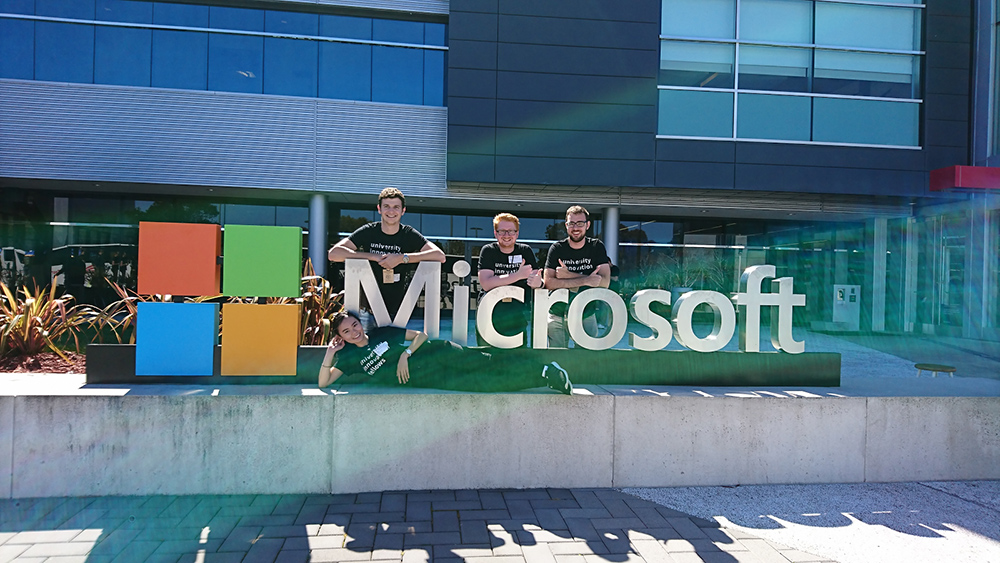
The University of Technology Sydney Fellows at the Microsoft campus in March 2017. We flew back to be part of the Microsoft One Week Hackathon!
by Irene Hsieh, Corey Stewart, Peter Cole and Matthew Childs
Originally posted on Medium.
“3! 2! 1! LET’S HACK!”
A sea of red, white and black towels raised in the air as we cheered. Confetti showered over all of us and I see a drone in the distance. We were standing in the heart of Microsoft, and in that moment, we were part of the Microsoft One Week Hackathon 2017.
Our team comprised of four University Innovation Fellows from the University of Technology Sydney (UTS) was selected as the winning team from a Global Inclusive Design challenge and won a trip to Microsoft’s headquarters in late July to join the world’s largest hackathon. This was an unforgettable week filled with breakthrough insights, mind-blowing moments and their discovery of the technology giant – Microsoft. The following is a recount of an adventure that most would describe as an opportunity of a lifetime.
During the March 2017 Silicon Valley Meetup, Microsoft challenged us to create a solution to “Improve diversity and inclusion for first year students”. Upon returning to Australia we ran interviews, workshops and brainstorming sessions to discover our problem area. We were intrigued to find that international students who made up of 25% of our cohort were isolated from the community. When announced as the winning team we were determined to instigate further and carry our mission to the other side of the world.
On the 22nd July we arrived in Seattle with anticipation. Driving into the modern campus we were blown away by the sheer size of the campus that consisted of 115 buildings with over 40,000 employees. Microsoft manages not only Office and Windows, but products and services including Xbox, LinkedIn, Bing, Skype, Surface, Azure and others we were yet to discover. Excitement for the coming week quickly overtook our nervousness.
We met up with Ryan, a Culture Engineer at Microsoft who was our host for the week. Our first day of the hackathon involved heavily brainstorming around our question. In our hackathon tents, we met the hackers of the diverse projects around us. From 3D printed prosthetic arms for affordable prices, to tech-based solutions for diabetics to hacks for Minecraft and Nintendo games, the energy and talent was contagious. We also met the Director of the Microsoft Garage, the team responsible for organizing the hackathon.
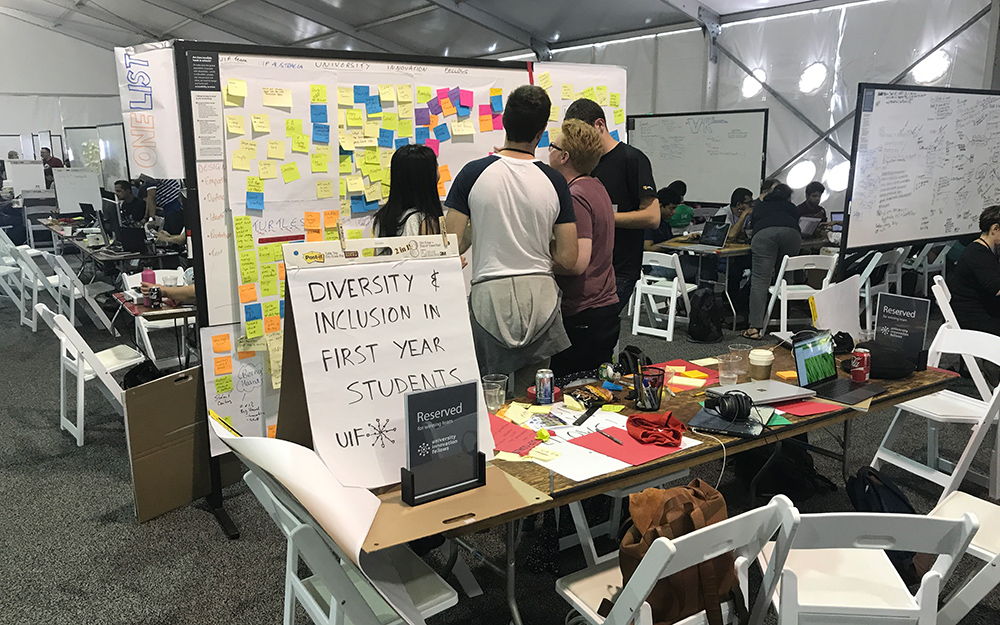
As University of Technology Sydney Fellows, we ideated around our board in the midst of the bustling hackathon. With the many post-it notes, we proclaimed ourselves the winners of the most colourful board competition at the hackathon.
After 48 hours of intense hacking, we built a strategic plan of events for holistic change of campus. We settled on a sustainable approach that was diverse and inclusive of the UTS community and will live on far past our time on campus. You’ll hear more about our solution soon!
Our solution included:
- Revamping our first week of semester for all first years to engage and seek out new opportunities. The idea aims to break down superficial barriers such as age, race, discipline and factors that have subconsciously hindered connections.
- Industry hackathons to be run regularly on campus. This will give students an opportunity to learn and engage with industry networks in a learning environment.
- Increase student awareness and recognising the “whys” of educational requirements. This will facilitate students to shift their mindset to find their “mission” not “major” during their time at school.
- Set up an innovation board to encourage events and conversations.
- Set up an innovation centre to foster innovative and entrepreneurial spirit on campus.
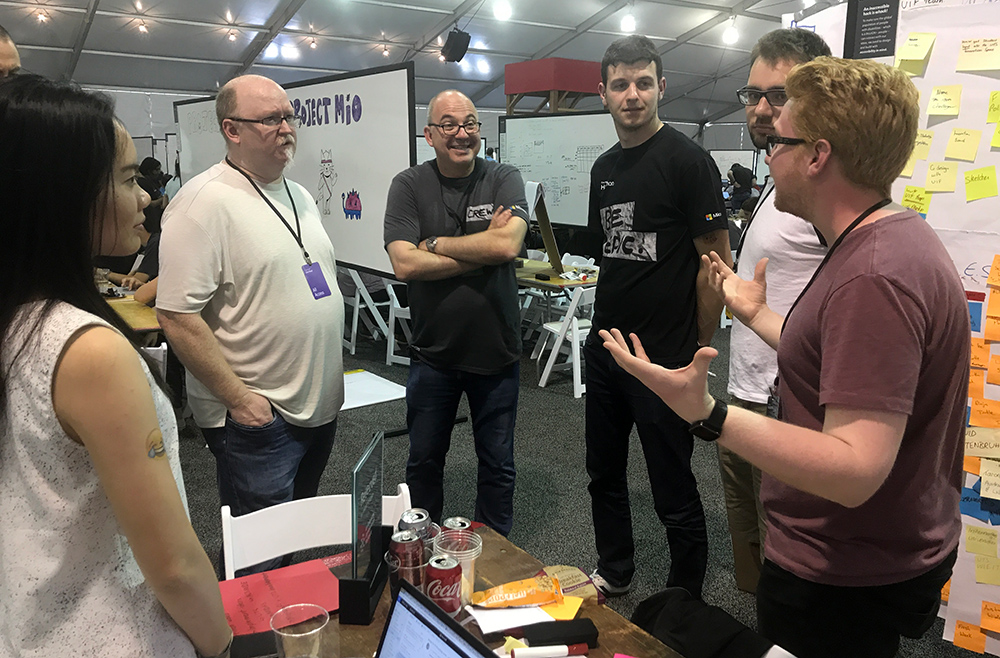
We were extremely lucky to share our ideas with Microsoft CTO Kevin Scott who listened with enthusiasm. We were also graced with the presence of CEO Satya Nadella at the hackathon!
Throughout the hackathon, the hundreds of sticky notes on our board caught the eye many participants including Microsoft CEO Satya Nadella and CTO Kevin Scott, who stopped by to learn more about our work. We discussed the possibility of working with industry partners such as Microsoft to facilitate programs on campus to boost student engagement and help them solve real world problems in innovative ways. It was surreal having such important figures take interest in our ideas.
On Wednesday, we met with employees across Microsoft product groups to get a feel for the flavors of innovation. First up was Debbie Thiel, Group Program Manager at Microsoft. Debbie shared the importance to look into the future of technology and help shift the technology to be inclusive of all types of people in the world. Afterwards, we headed to the Microsoft Envisioning Centre. Not knowing what was ahead of us, we got a private tour of the space usually reserved for Fortune 500 C-level executives and government leaders. The center is a space for Microsoft to envision what the future of smart homes, living spaces and offices could be. We felt like kids in a candy store and we goggled at every piece of technology. Mundane activities such as conducting meetings to unlocking your front door had been reimagined with a large focus on inclusivity and simplicity.
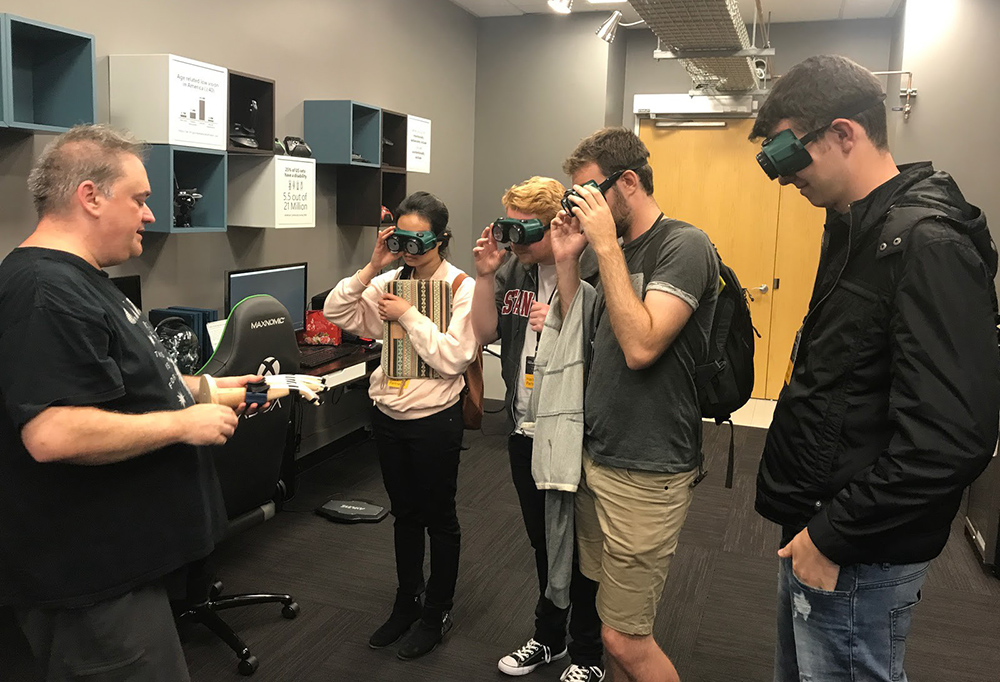
Doing empathy work with Xbox Inclusive Tech Lab by Senior Interaction Designer Bryce Johnson. We learnt about the disabilities Microsoft is designing for. We put on glasses which impaired your vision to empathize with individuals with tunnel vision or other vision impairment.
On campus, we were given a tour of the Xbox Inclusive Tech Lab by Senior Interaction Designer Bryce Johnson. Our first experience was putting on glasses which allowed us to empathize with different types of visual impairments. Microsoft uses these centers to bring in people with a range of abilities to ensure products and solutions best suit their needs. This leads to new innovations such as; different tones for menu selections, new controller designs and sub packs to help hearing impaired gamers experience sound. This is the heart of Inclusive Design, by designing for a person with specific abilities, the improvements will be used by many other types of people as well. Designing for inclusion and focusing on empathy work with users is why and how Microsoft stays ahead.
Next was the Microsoft’s anechoic chamber, the quietest room in the world. The room sits at -20db at the edge of the physical limit of -23dB; the sound atom’s make bouncing off each other. The designer of the chamber, Gopal Gopal, gave us an unforgettable tour of the lab. At one point, he left us in the dark and soundless chamber and within minutes you could hear the blood flowing in your ears and bones creaking as you turned your head. We learnt about how critical it is to have environments with the lowest possible sound baseline while testing new hardware products.
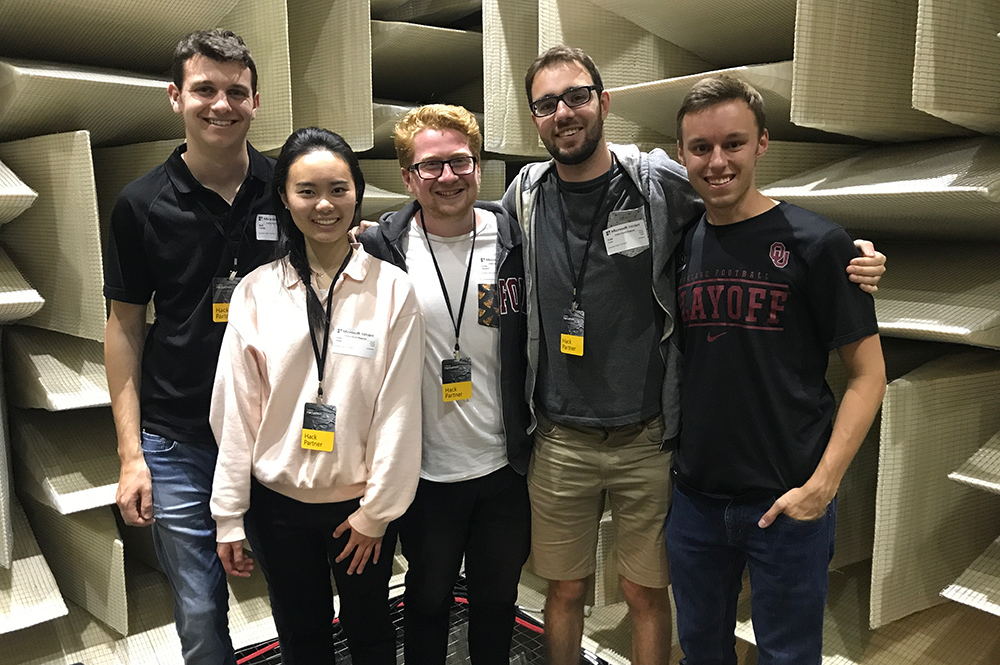
We were given a tour in the quietest room in the world by the designer himself. At one point he left us in the dark, soundless room we could hear the blood flowing in our ears and bones creaking as you turned your head.
As we continued to hear from people across the company, we met with Ryan Phillips, UX Designer at Xbox and Oscar Murillo, Creative Director of Inclusive Design at Microsoft. These individuals provided insightful details into their work, their journey to Microsoft and some of the greatest insights they’ve gained from their time at Microsoft.
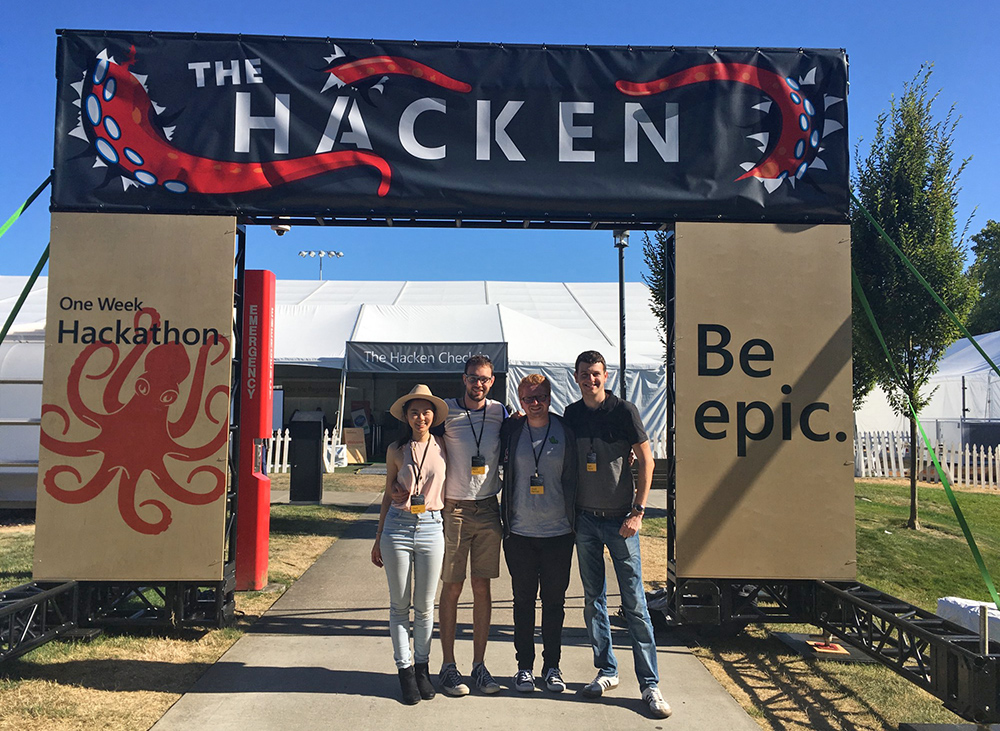
An amazing 48 hours hacking with 18 000 people worldwide! We were extremely inspired by the projects, talent and energy on the Microsoft campus. It was a once in a life time experience!
Another extraordinary individual we met was Mandeep Singh, Program Manager of EDU strategy at Microsoft. After spending time at a startup and Microsoft, he helped contrast the experiences and shared his advice for students. Singh reflects “I genuinely believe in that 18 to 24 months of working on my startup, I learnt way more than I did than my bachelors or masters degree afterwards.” Furthermore he pinpointed the importance of learning and the passion required in a startup, this gave us an understanding and context to the advices we are often given.
Last but more importantly, this entire experience would not have been the same without Ryan who helped plan the week. This experience has taught us so much about Microsoft’s culture, products and the people there. We could not have asked for a better week at Microsoft, thank you Ryan!
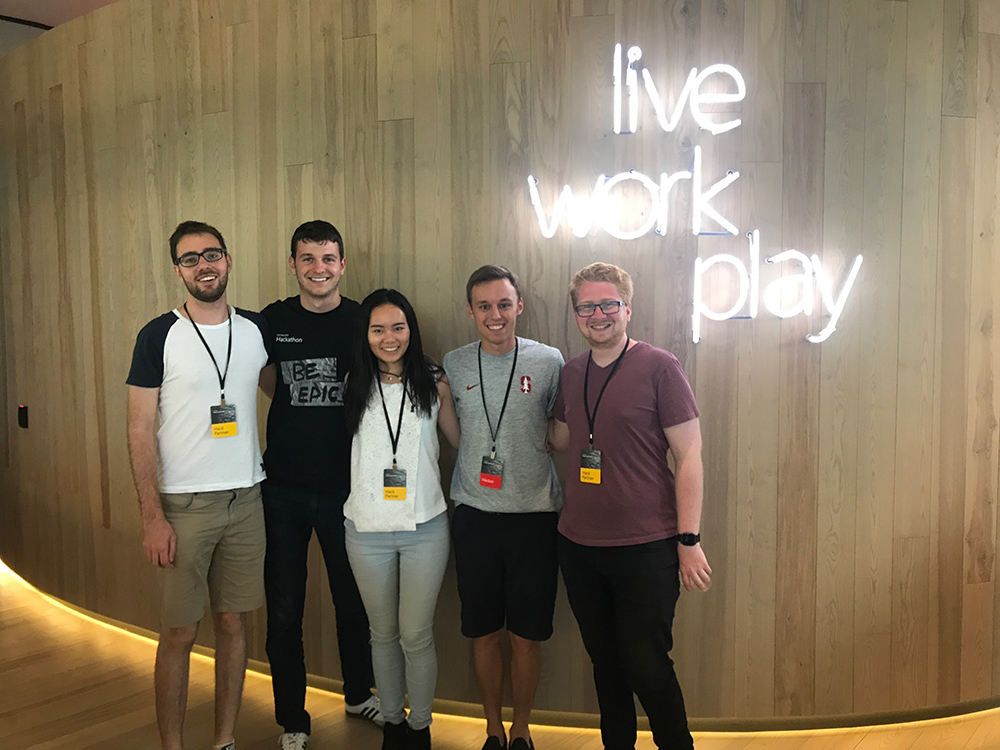
A photo of us in front of the Microsoft Envisioning Centre with the amazing Ryan Philips. We were able to see some of the greatest highlights on campus!
We could never have imagined that only four months after receiving our fellowship, we would be back for an adventure like no other. The experiences and lessons learnt during our adrenaline filled week have already rippled in how we see and do things back at the university. This trip gave us invaluable lessons into inclusivity, innovation and creativity. With this gained perspective, we are excited to continue engaging with our community and ignite meaningful impacts on our campus. Stay updated on our upcoming adventures through our Facebook page. We can’t wait to share with you all the stories ahead!
Check out more photos here!

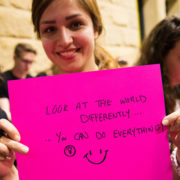




Leave a Reply
Want to join the discussion?Feel free to contribute!